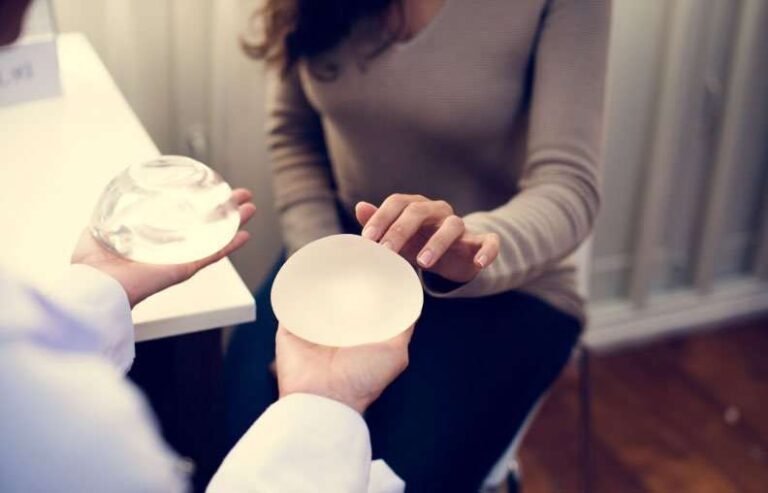Augmentation mammoplasty surgery is the dream of many women – it is a big step towards regaining self-esteem and quality of life. However, those who have undergone the procedure or intend to undergo it must be vigilant and know how to recognize the signs of silicone rejection, because, although rare, this complication can occur.
The rejection of the prosthesis is produced by a process called capsular contracture, which appears when the organism recognizes the implant as a foreign body and initiates a defense reaction. The most common symptoms are asymmetry of one of the breasts, undulations on the surface of the prosthesis, hardening of the region, pain and swelling.
Many women have doubts about this topic and feel insecure about the possibility of rejecting the prosthesis. Thinking about it, in this post we will show you the main information about this topic and how you can reduce the chances of silicone rejection.
7 myths and truths about prosthesis rejection
In a brief search, it is possible to find various information about silicone implants and the possibility of rejection. But what is the myth and what is true? We have answered the most frequently asked questions.
1. Rejection of prostheses is impossible
Myth. First of all, the meaning of “prosthesis rejection” must be clarified. The prosthesis is not rejected by the body – what occurs is an inflammatory process around the silicone. This process is known as capsular contracture (which is popularly called “rejection”).
Capsular contracture, as mentioned, occurs when the patient’s body recognizes the implant as an invader. Unable to expel it, the body develops a membrane (scar) around the prosthesis, forming a capsule that separates it from the rest of the tissues.
However, it should be noted that this is a rare complication, especially with today’s technology, which has revolutionized the surface of prostheses. Even so, it is necessary to be aware of this risk, as it is not ruled out.
-
2. It is the surgeon’s fault
Myth: The rejection of the prosthesis is not caused by a medical error. This complication is produced, as we have seen, by a reaction of the person’s own organism. Therefore, following medical guidance during the postoperative period is essential to reduce the chances of rejection and ensure a good result.
This avoids stimulating the body’s defense mechanism, as the body will suffer less from the effects of surgery.


3. There is a risk of prosthesis breakage.
Right. Rupture of the prosthesis is a possibility, however, for this to occur, it would require a very large trauma, such as a car accident, in fact, implants are very resilient and elastic, and tend to absorb the impact rather than break.
One issue that women should keep an eye on is time. As the years go by, the prosthesis becomes more fragile. Therefore, the recommendation is to change it every ten to fifteen years.
Rupture can cause discomfort such as pain, numbness, tingling and even the formation of nodules and change in the shape of the breasts. In these cases, implant replacement should be done immediately to avoid more serious problems.
4. It is not necessary to check the origin of the prosthesis.
Myth: It is very important to confirm the quality of the product and especially to check the manufacturer’s references. The more advanced and current the technological processes involved in the manufacture of the prosthesis, the lower the chances of rejection of the prosthesis and complications for the person.
In this sense, it is essential to talk to a plastic surgeon like Dr. Guevara so that he can give proper guidance on the best implant shape, types of prostheses and the quality of each brand.
5. Mammoplasty surgeries with implants are always being improved.
Right. Surgical techniques for silicone placement are always being improved and postoperative problems are increasingly rare. In addition, with the evolution of prosthetic materials, the rate of complications with implants has also decreased.
In the past, the cases of silicone rejection were high, because the prostheses used had a smooth surface, which facilitated capsular contracture. Today, with the advances in medical technology, textured prostheses are used, which have a rough surface, which facilitates healing and tissue adhesion, reducing the chances of rejection.
6 Any medical professional is qualified to perform silicone implant surgery.
Myth: Augmentation mammoplasty should only be performed by a plastic surgeon who is a member of the Colombian Society of Plastic Surgery. Under no circumstances should you undergo a procedure of this magnitude with a doctor of another specialty or without certification.
7 Treatment to resolve implant rejection can be simple.
Right. In the postoperative period it is essential to follow the medical recommendations to avoid any problems with the prosthesis. The process of silicone rejection does not necessarily mean something serious. In the vast majority of cases the treatment is performed without complications.
In simpler cases, the surgeon may prescribe corticosteroid medications or simply recommend massages to minimize discomfort. However, when the capsular contracture process is more severe, especially when the woman feels the symptoms of rejection, it may be necessary to change the implant.
Care to reduce the chances of implant rejection

The first step to reduce the chances of implant rejection is to choose a good plastic surgeon, because he will never work with prostheses that are not approved by the FDA and that may offer health risks to his patients.
In addition, the choice of the brand of silicone prosthesis is fundamental to avoid capsular contracture. Currently, reduced rejection rates are directly associated with implants with textured or polyurethane surfaces. Therefore, it is very important to choose a quality prosthesis.
In addition, some measures in the postoperative period reduce this complication:
- take the medication prescribed by the doctor on a regular basis;
- lymphatic drainage according to the doctor’s indications;
- Follow medical guidance to the letter, especially with regard to rest periods, nutrition and the correct use of dressings.
It is important to be attentive to any symptoms that appear after augmentation mammoplasty surgery and inform the doctor immediately, so that if a problem occurs, it can be diagnosed in time and avoid future complications (or even a new surgery).
As we have seen, there are several myths and truths related to implant rejection. Now that you know the main information about this topic, you can be calm and confident about implants, and also be prepared to recognize any symptoms of rejection that may arise.



